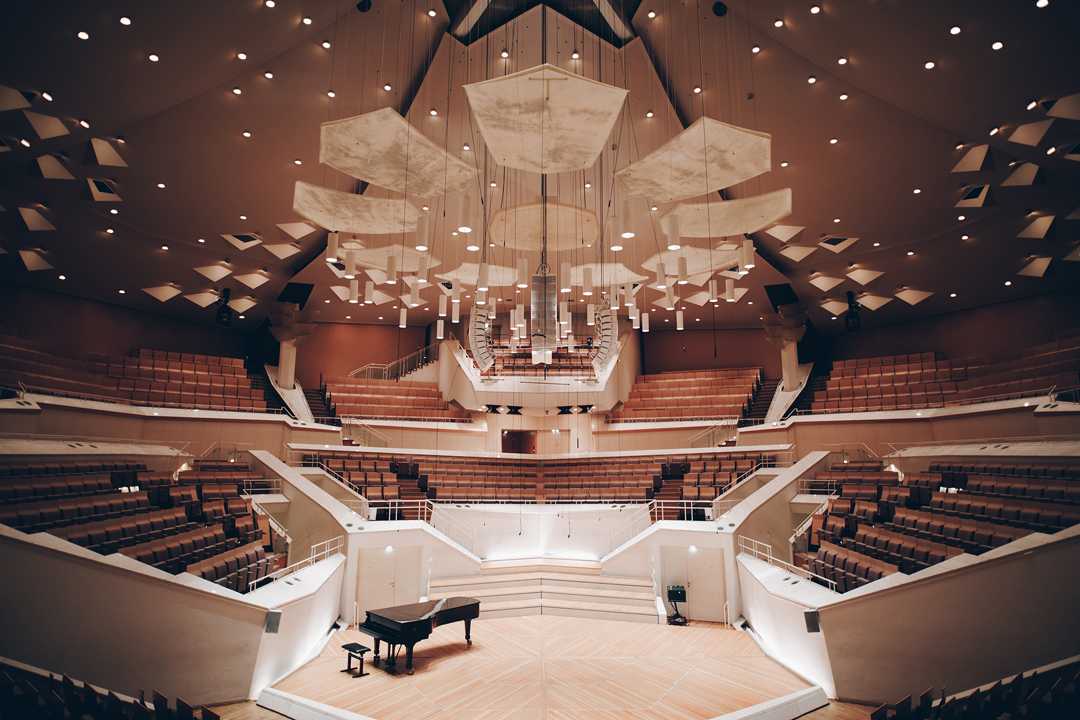Philharmonie Berlin switches to ArcSystem
- Details

Today, the Philharmonie designed by Hans Scharoun belongs to the Kulturforum Berlin along with the Chamber Music Hall, the museum of musical instruments and a series of other buildings, and is just steps away from the Potsdamer Platz. Its exceptional design reminiscent of the shape of a tent and the conspicuous yellow colour visible from afar have made it one of the city's landmarks. While initially the unusual and innovative character of its architecture and concert hall design provoked controversy, the Berliner Philharmonie has since inspired architects of concert houses everywhere in the world.
The Chamber Music Hall completed in 1987 seating an audience of 1,180 is the ‘little brother’ of the Berliner Philharmonie - in terms of both the architecture and the range of musical events.
As is frequent practice in cultural buildings, conventional 120V / 250W light bulbs with E27 thread were used in the Chamber Music Hall as well. However due to new EU energy directives this type of bulb is no longer produced, and as the Philharmonie's supplies were becoming scarce an alternative had to be found that would come up to the highest demands the philharmonic orchestra or any other orchestra playing in the Chamber Music Hall might have with regard to lighting.
On winning the contract, ASC involved Anke Schierenbeck from VisionTwo, the Berlin IBM planning office and the manufacturer GSD in the job of developing various light simulations for the 50 lights which were awaiting replacement. A series of lighting tests was performed under real conditions as well in order to convince the user of the level of enhancement that could be achieved if the new lighting equipment was used.
After sampling had been successfully completed, the ArcSystem Pro One-Cell High Output type with 108W, 8,000lm, a constant colour temperature of 3,000K and D1HO DMX RDM driver was identified as the equipment of choice. The particular challenge consisted in mechanically fitting the LED heat sink to the existing cylindrical housing and in providing a secure structural connection of steel ropes and existing cables to ensure mechanically reliable pendant mounting above the orchestra.
"These problems could be solved in the ASC workshop where we had the chance of availing ourselves of Christian Schroeder's long-standing construction and development experience,” Anke Schierenbeck points out. “Thus structural details were generated in the 3D printer, lasered metal parts ordered, powder-coated at ASC's and assembled as small-batch series during the summer break in a very short time.”
Kai Mielisch, technical director of the Berliner Philharmonie, comments, "Considering the narrow time frame I'm especially glad that despite this constraint VisionTwo was able to provide an adequate light equipment solution which even resulted in a major enhancement of the lighting situation in our house. The sampling procedures and the light simulations helped us to make the right decision."
With the DMX network being extended additional cables and their support systems had to be installed as well along with the switch boxes for the electronic control equipment. The ArcSystem Pro One-Cell High Output LEDs are operated with one D1HO DMX RDM driver each which means that the LEDs can be dimmed down to 0% in an absolutely smooth process and that it was not necessary to replace the winches used in the hall for pendant mounting of the lights.
(Jim Evans)
















